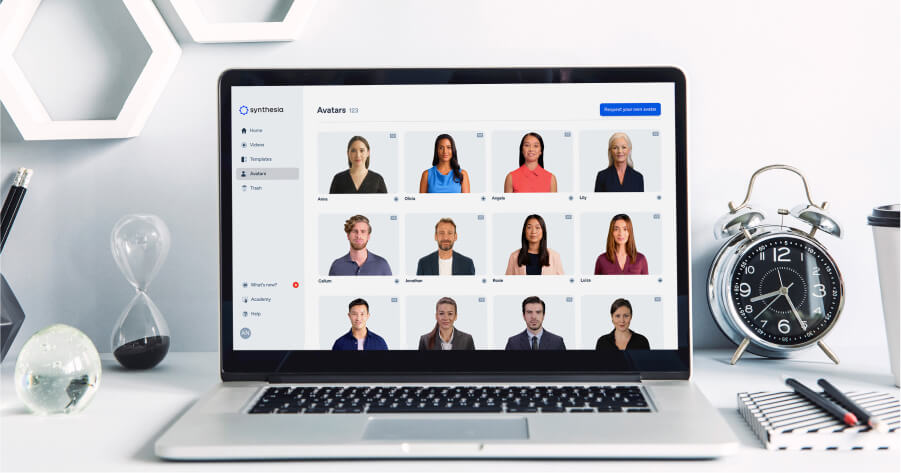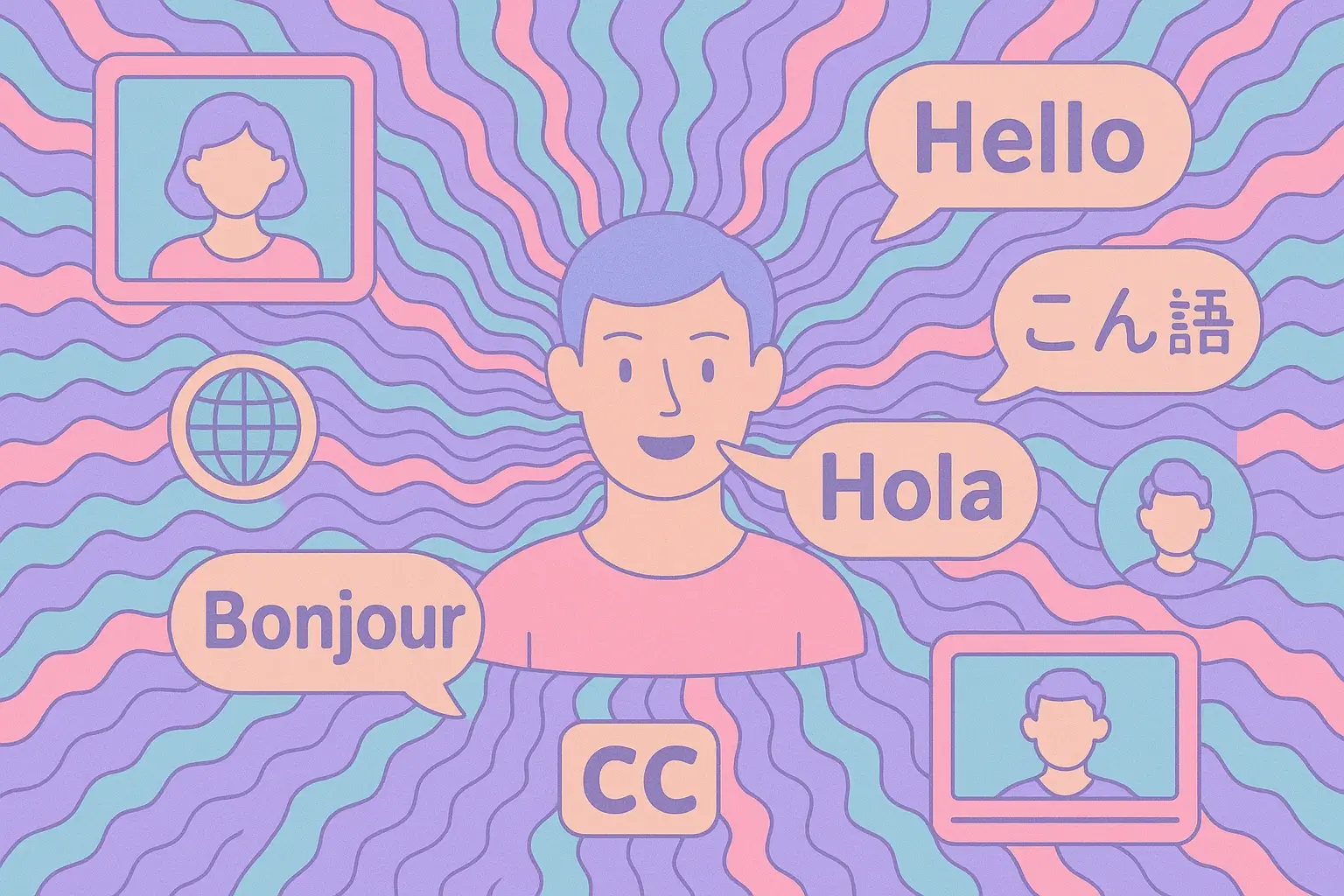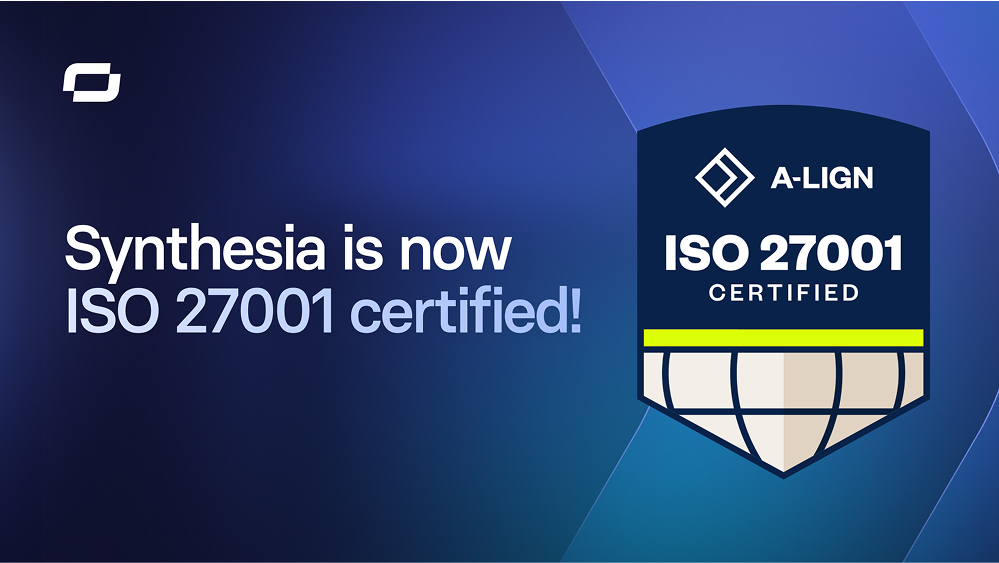
Create AI videos with 230+ avatars in 140+ languages.
What is video localization?
Video localization refers to adapting and modifying a video's content, including dialogue, captions, graphics, and cultural references, to suit the linguistic, cultural, and regional preferences of a specific audience.
Localization goes beyond simple translations; it may involve adapting content for cultural relevance, including rewriting scripts or changing visuals to better resonate with the target audience.
However, it's important to distinguish localization from translation.
Video localization does involve translating, dubbing, or subtitling the original video's audio into the target language, but that's not all. It also requires adjusting visual elements and ensuring that the overall message and context of the video resonate effectively with the intended viewers. Think images, colors, date and time formats, references, puns, idioms…

Multimedia localization plays a crucial role in expanding the global reach of videos, enhancing viewer engagement, and fostering cultural sensitivity and understanding.
Key aspects of video localization can include:
- Subtitling and dubbing: Subtitling involves providing written translations of the spoken content in the video, while dubbing replaces the original audio with a translated voiceover
- Transcription: This involves converting the video's audio into written text. This is typically the first step in subtitling and can also be helpful for creating closed captions for the hard of hearing
- Lip-syncing: Dubbing can sometimes involve lip-syncing, where the new voice track is matched as closely as possible to the lip movements of the original speakers
- Translation of on-screen text: Any text appearing in the video, such as signs, letters, subtitles, or infographics, must be translated
- Cultural adaptation: This involves modifying the content to suit the cultural context of the new audience. This could include changing references, humor, or images that may not be understood or could be offensive in the new culture
- Conversion of measures and formats: Things like currencies, dates, and measurements may need to be converted to formats familiar to the target audience
- Script rewriting or reversioning to better fit cultural context and audience expectations.
Why is video localization important?
Adapting video content for a new audience takes time and money. So why bother?
According to a report from the Harvard Business Review:
- 72.1% of consumers spend most or all of their time on websites in their own language
- 72.4% of consumers said they would be more likely to buy a product with information in their own language
- 56.2% of consumers said that the ability to obtain information in their own language is more important than price
Here are the specific benefits of video localization.
Enhanced audience engagement:
Localized videos resonate better with audiences by using their language and cultural nuances, increasing viewer retention and emotional connection.
Expanded reach:
Localization makes content accessible to non-native speakers and diverse audiences, expanding the reach of your message.
Higher conversion rates:
Localized content feels personalized, leading to greater customer trust and improved conversion rates for products or services.
Compliance with regional norms:
Ensures content adheres to local laws, cultural sensitivities, and ethical standards, reducing the risk of miscommunication or offense.
Competitive advantage:
Localized video content helps differentiate your brand from competitors who rely solely on generic or untranslated content.
Better ROI on content:
Repurposing existing video content through localization maximizes its value and impact without the need for entirely new production.
Increased SEO performance:
Localized content can boost search engine visibility in different regions, driving more organic traffic.
How to approach video localization
Understand your audience
Understanding your audience is key. Analyze your international markets, identify where engagement is strong, and prioritize localization efforts based on potential ROI. Start with basic research—you may uncover unexpected opportunities for localized content to thrive.
Decide what content to localize
Not all content needs immediate localization. Focus on content that delivers the most value. You might begin by adding subtitles or voiceovers to short videos and testing their impact in key markets before scaling. Experiment and refine your strategy as you go.
Choose the right tools or services
Once you’ve identified your target content and audiences, select tools and services to execute localization effectively. Look into options for video translation, subtitling and dubbing that match your goals. Below, we explore various localization methods to guide your choice.
Video localization methods
Subtitles:
Subtitles are a cost-effective way to localize video content, translating spoken dialogue into on-screen text without altering the audio. Tools like YouTube’s auto-captioning enable quick, automated subtitle creation in multiple languages, while open source manual tools like Aegisub offer precise customization but are time-consuming. Subtitles are ideal for reaching global audiences, testing new markets, and enhancing accessibility affordably.
Captions vs. Subtitles:
Captions and subtitles serve distinct purposes in video localization and accessibility.
Captions are designed to include both audio and visual cues, making them essential for viewers who are deaf or hard of hearing. They not only transcribe spoken dialogue but also describe non-speech elements like music, sound effects, and tone, ensuring the viewer fully understands the video’s context.
Subtitles focus solely on translating spoken content into another language for non-native speakers, without including audio cues. Subtitles are especially useful for localized video content and are widely used for muted social media videos or quick market testing, as they offer a cost-effective way to engage international audiences without requiring extensive re-editing or dubbing.
Voiceovers and Dubbing:
Voiceovers and Dubbing are two key methods for localizing video content, each serving different purposes.
Voiceovers involve overlaying a narrative-style translation onto the original video, making them an affordable and quick solution for localization. However, they often lack the emotional depth and tonal nuances of the original audio.
Dubbing replaces the original dialogue entirely, aligning the new voice track with on-screen lip movements to create a more immersive experience. While dubbing offers higher quality and emotional authenticity, it is typically more expensive and time-intensive.
Versioning
Versioning, also known as reversioning, is the process of adapting existing video content for a specific audience or region by modifying certain elements to improve relevance and engagement. Unlike full-scale re-creations or transcreation, versioning selectively updates parts of the content while preserving the core message and structure. This approach is cost-effective and efficient, making it a popular choice for marketing campaigns, training videos, and digital advertisements.
Transcreation
Transcreation reimagines content for a new audience while preserving the brand’s voice and intent. Unlike translation, it often starts from scratch and results in highly localized content tailored to specific cultural nuances. It's ideal for high-impact marketing campaigns and strategic branding efforts.
How to choose between subtitles, voiceovers, or dubbing
Start small: Subtitles are a cost-effective way to test new markets and assess audience engagement without a significant upfront investment.
Scale up: If your content gains traction, enhance the experience by investing in dubbing or voiceovers to create a more immersive and localized connection with your audience.
Use AI: Tools like Synthesia can automate translation and voice generation, offering a scalable, budget-friendly solution for dubbing or voiceovers while maintaining natural-sounding results.
How Synthesia can help
Here at Synthesia we can help in two ways:
If you have already created your video:
With Synthesia's AI dubbing feature you can translate any video into 32+ languages with the same voice and perfect lip sync.
The tool also allows you to edit the transcript to correct any mistakes, keeping the message and tone intact.
There's a free demo for you to try that lets you upload your video file or translate a YouTube video.
If you create a video in Synthesia:
You (and your audience) can automatically translate videos to 140+ languages with 1-click translations. Check out this video to find out more.
About the author
Strategic Advisor
Kevin Alster
Kevin Alster heads up the learning team at Synthesia. He is focused on building Synthesia Academy and helping people figure out how to use generative AI videos in enterprise. His journey in the tech industry is driven by a decade-long experience in the education sector and various roles where he uses emerging technology to augment communication and creativity through video. He has been developing enterprise and branded learning solutions in organizations such as General Assembly, The School of The New York Times, and Sotheby's Institute of Art.

Frequently asked questions
What is video localization, and how does it differ from translation?
Video localization involves adapting video content to align with the linguistic, cultural, and regional preferences of a specific target audience. This process goes beyond mere translation of dialogue; it encompasses modifying visual elements, cultural references, humor, and symbols to ensure the content resonates with viewers from different regions. In contrast, translation focuses solely on converting text from one language to another without considering cultural nuances.
What are the primary benefits of video localization for businesses?
Expanded Audience Reach: By translating and adapting content, businesses can tap into new markets and demographics, significantly broadening their global presence.
Improved Understanding and Engagement: Presenting content in the audience's native language enhances comprehension and engagement, leading to higher viewer retention and interaction.
Competitive Advantage: Demonstrating cultural sensitivity and understanding through localized content can differentiate a brand in the marketplace, fostering trust and loyalty among consumers.
Increased Conversion Rates: Localized videos can boost website visits and conversion rates, as audiences are more likely to take action when content is tailored to their cultural and linguistic context.
What techniques are commonly used in video localization?
Common techniques in video localization include:
- Subtitling: Displaying translated text on-screen while retaining the original audio, allowing viewers to read along in their language.
- Dubbing: Replacing the original dialogue with recorded speech in the target language, often using voice actors to match the original performance.
- Transcription and Voiceover: Creating a written version of the video's content and recording a voiceover in the target language, which may or may not sync with the original lip movements.
- Adapting Visual Elements: Modifying on-screen text, graphics, symbols, and other visual components to align with cultural norms and preferences of the target audience.
How does video localization impact SEO and online visibility?
Localized video content can significantly enhance SEO performance by:
- Improving Search Rankings: Search engines favor localized content, leading to higher rankings in search results for users in different regions.
- Increasing Discoverability: Localized videos are more likely to appear in search results for users searching in their native language, driving better traffic to the content.
- Enhancing User Experience: Providing content in the audience's preferred language increases engagement metrics, which can positively influence search engine algorithms and further boost visibility.
What are best practices for implementing a successful video localization strategy?
To effectively localize video content, consider the following best practices:
- Understand Your Target Audience: Conduct thorough research into the cultural nuances, preferences, and behaviors of your target audience to tailor content appropriately.
- Choose the Right Localization Method: Decide whether subtitling, dubbing, or voiceover is best suited for your content and audience preferences.
- Work with Native Speakers: Collaborate with professional translators and voice-over artists who are native speakers of the target language to ensure accurate and culturally appropriate translations.
- Adapt Visual and Textual Elements: Translate and adapt all on-screen text, graphics, and visual elements to ensure clarity and relevance in the target language.
- Ensure Quality Assurance: Conduct thorough reviews and testing to ensure the localized video meets technical standards and resonates with the target audience.
What is an example of video localization?
One example is changing on-screen text or images to fit local preferences. For instance, we might replace a sign in English with the same sign in Spanish, or switch out a reference to a time zone so it matches regional norms. This way, your content feels more familiar and relevant to the audience in that specific market.














